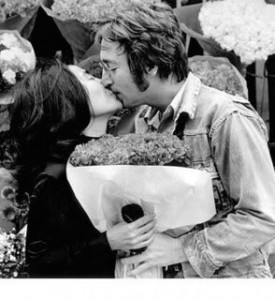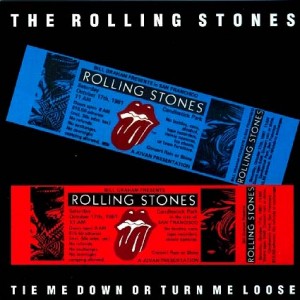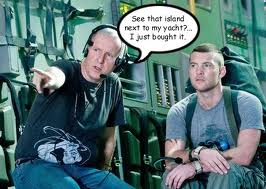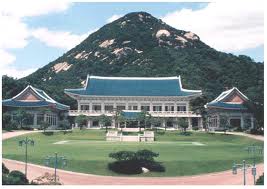Visual Effects companies are not viable businesses.
They are extremely costly to run, need an ongoing influx of cash to continually upgrade their hardware and software, are in constant turnover of their staff, have non-existant margins, incredible overhead, demanding clients, compacted schedules, outrageous competition, offshore companies that enjoy government subsidies and tax rebate programs… yet, while many have gone out of business, more seem to be opening every year. Having run DD and ILM, it seems nonsensical to me to start a visual effects company, let alone to take one public. What is the upside? When do profits start rolling in?
It seems ironic that 19 of the top 20 box office hits of all time are chock full of VFX and that producers, directors and motion picture studios are making billions of dollars while the VFX companies that are responsible for the incredible imagery that attracts viewers are at best keeping their heads above water and at worst going out of business.
In the glory days of the mid 1980’s, VFX companies were barely profitable and over the years, margins continued to slip. So…. what are the business reasons for being in this so called “business”?
The only answer seems to be creating and owning content. All we need do is look at PIXAR… now, we’re talkin’!
I was aware of this conundrum years ago, which is why I left Lucasfilm and created Digital Domain. And why in the last 3 years of my tenure at DD, I focused solely on creating content. Unfortunately, for various reasons, I was unsuccessful.
Digital Domain, during my tenure was a company filled with some of the greatest compositors, modelers, animators, technical directors, software developers, matte artists, motion control camera operators and visual effects production people of its day. And years before, when I was running ILM, one could say the same of its talents and capabilities. In fact, today the very same could be said about WETA, R&H, ILM, DD, SPI ( why do they all have to have monikers made up of capital letters). I often compared world class VFX studios with PIXAR. I mean, what was Pixar before it was PIXAR? Or Blue Sky? Or Dreamworks Animation (Pacific Data Images)? Weren’t they all very similar to the large VFX companies of today? Wasn’t PIXAR’s DNA very similar to ILM? Didn’t PDI compete directly with ILM for commercial productions? Well, to me, at the time, the answer was simple. YES.
So, why was it that the VFX companies were barely staying alive but PIXAR was making millions? Content. PIXAR created a product whilst the VFX companies were service based businesses that helped create images that were used to market and promote films.
Recently there have been several VFX companies that seem to be desirous of creating content. Digital Domain is one of them. According to my sources, they are betting a great deal of money ( by way of deferring VFX costs) on ENDERS GAME. ENDERS GAME will be directed by Gavin Hood (X MEN WOLVERINE, TSOTSI) and distributed by Summit (the production company and distributor of the TWILIGHT films).
In addition, they have built an animation studio in Port St Lucie FLA and have launched preproduction on a G rated CG animated film, THE LEGEND OF TEMBO. THE LEGEND OF TEMBO, a family film about a baby elephant seems to have no stars attached, no production funding in place and no distribution. The directors are Aaron Blaise (BROTHER BEAR, Director) and Chuck Williams (BROTHER BEAR, Producer) now both employees of Tradition Studios, owned by DD and funded primarily by the state of Florida. Usually CGI animated films made in the USA cost between $125-200 million dollars to produce. That’s a lot of cash! This content business is difficult, expensive and risky..
However, back in 1999, I decided that Digital Domain finally needed to start to produce its own film content.
We had taken our shot in content ownership in videogames with the introduction of the first girls videogame “ Barbie Fashion Designer”. Mattel had decided that they wanted to get into the videogame market and Doug Glen, the VP of Digital Media for Mattel and a former LucasFilm Games VP who was an associate of mine whilst I was at LucasFilm, had approached me to develop a videogame based around the infamous Barbie character. With the help of Steve Schklair and DD’s New Media team, Barbie Fashion Designer hit the shelves of Toys “R” Us and created quite a stir. A major hit, yet DD was not seeing the kind of revenue we needed to lift the company out of the “work for hire” VFX doldrums.
So, it was with the incredible success of TITANIC and Pixar’s TOY STORY that I naively thought we could produce world class feature films. As I had done with so many things in my life, I just started doing it.
First things first… I needed a story… sorta like TITANIC… a historic disaster… laced with a fictional love story… and real life characters. It had worked for Doctorow and Cameron, why not me?
I started cataloging 20th century disasters. The Von Hindenberg Zeppelin, Mt. St.Helens , the San Francisco Earthquake and the dropping of the Atomic Bomb on Hiroshima. Always the businessman, I also realized that I would need funds to be able to research, write and develop a script as Digital Domain, at the time, following TITANIC, had no money to invest in new ventures. In fact, we barely had money to make payroll.
During that time I had been involved in a business venture with an old friend of mine from Japan, Yoshinobu Higashihara. Higashihara-san and I met when I was at Lucas. Higashihara had been a Sr VP of Nippon Telegraph and Telephone (NTT) one of the largest corporations on the planet. NTT had approached LucasFilm to help them understand creativity. Japan Inc. was quickly taking its revenge on the US and in fact the rest of the world by becoming the fastest growing economy of the 80’s. The Japanese were everywhere and they were buying everything. While the Japanese had become the most efficient manufacturing force in the world, they, for some reason, did not believe they, as a people, were creative. And so, they started approaching major creative companies within the US, and I guess, LucasFilm was on the top of NTT’s list.
With the help of Rose Duignan, we designed a creative curriculum for six NTT execs. These rather buttoned up, conservative Japanese salarymen , now under the tutelage of Ms. Duignan were taken to museums, Grateful Dead concerts and asked to go skinny dipping in the Pacific Ocean. For this, NTT paid LucasFilm $1,000,000. Their most senior exec, Higashihara must have thought they got a great deal because he and I bonded and became fast friends that would last for well over a decade.
Many years after leaving Lucas and starting DD, I got a call from Higashihara who was no longer at NTT. He had formed his own company, one that was involved in starting colleges teaching creativity and digital media. I guess those late night naked runs on Stinson Beach made an impression.
Higashihara, ever the entrepreneur had realized that Japan, still flush with cash, needed to educate the sons and daughters of the wealthy. And what might those nerdy kids be interested in? Computers, visual effects, comics, sci fi and movies. Higashihara went looking for capital to fund this new venture, and he thought that his old friend Scott might make for an interesting partner.
His offer was one that I couldn’t refuse. Seven figures to attach my name to the venture. I would have to travel to Japan twice a year, lecture and do interviews throughout the country. At first, I signed a contract with one group, but for some reason they couldn’t come up with the cash. With traditional Japanese sensibilities they were terribly embarrassed by their inability to make good on their deal. So, they did what any self respecting businessman would do… they showed up at my office with $100k in a brown paper bag, slid it across my desk, bowed deeply and left. That day at the Bank of America was interesting. I stepped up to the tellers window in shorts and a tee shirt and handed over one thousand $100 bills.
With that deal underwater, Higashihara started looking for other investors. A few months later, I got the call. He had pitched his Scott Ross Digital Media School concept to an educational institution based in Fukuoka, Tsuzuki Gaukonen. They had ambitious plans of opening up a half dozen of these schools scattered around Japan.
Tsuzuki colleges and universities had been around for awhile, founded by the father of the present Chancellor. Their main campus was Daichi University in Fukuoka. Tsuzuki-san was generous beyond all imagination. First class airfare, world class interpreters, five star hotel suites filled with flowers, hundreds of students waving American flags whenever I landed at airports in Japan, black limos to whisk me and my interpreter to world class restaurants.
My first in person meeting with Tsuzuki-san was a bit strange however. An entourage of a dozen or so of his staff, Higashihara, my interpreter, the man himself and I were shown to a secret underground room under the University. This underground room was a room within a room, lined with lead, with submarine style hatches for doors and it’s own generators and air filtering system. Tea was served by two attractive young women in uniforms. Introductions were made. It seemed that most of the “staff” were ex military. Tsuzuki-san was rather rotund for a Japanese and he didn’t really speak, he grunted, loudly. A scene right out of a Fellini movie. We discussed poetry, Mt Fuji, the meaning of Wabi Sabi though the rest in the room were still and sat bolt upright. Tsuzuki-san was a fan of TITANIC and asked if Digital Domain had any interest in producing its own films. Thinking quickly, and running through the various disaster scenarios I had been researching, I mentioned that I was interested in creating a film surrounding the dropping of the Atomic Bomb on Hiroshima. Tsuzuki-san’s face changed from his animated boisterous self to one of tranquility and deep thought. A minute or so passed, everyone remained silent. He leaned forward and whispered to my interpreter. He wanted to know how much a film like this would cost?
“About $150 million”, I guessed.
“Well, I don’t have that kind of money”, Tsuzuki gruffly responded. “How much to get you started?”, he said.
“About $1.7 million”, I guessed again.
The next day, Higashihara, my interpreter and I flew to Hiroshima where Tsuzuki was planning on opening another Scott Ross Digital Media college. The throngs of students met us at the airport, the flags were waving, the Tsuzuki staff ushering us to the waiting limo. Another formal dinner that evening and the next day we were to meet the mayor of Hirsohima, Akiba-san, who would tour us through the Hiroshima Peace Memorial Museum. There was, as usual, a press conference. One of the reporters, Akemi Satoda, approached me and told me that she had seen TITANIC forty six times. Forty six times! I was fascinated, we had coffee and talked. I made mention that I might be interested in producing a film about the Bomb. She asked if I had met any survivors. I hadn’t and so she took it upon herself to set up a meeting the next day with one of the most fascinating women I’ve ever met, Une-san.
Une-san, was at the time in her early 80’s, about 4’2” tall and looked remarkably like Yoda. She showed up to our meeting with a shopping cart full of plastic jugs of water, a few dozen small glass cups, and a shopping bag full of presents for me. Une-san was the embodiment of pure energy.
Akemi translated as Une-san’s story unfolded. During the closing months of WWII, Une-san was the nanny for dozens of orphaned infants housed in a make shift quanset type hut on the outskirts of Hiroshima. Supplies and food were hard to come by and so the children slept in hammocks hung from the rafters and fed on milk made from boiled sweet potatoes.
On the morning of August 6th, 1945, Une –san was tending to her brood of about 50 infants, when the sky lit up with the light of a thousand suns. Seconds later, she was blown over by the force of a hurricane wind. For hours she remained unconscious and when she awoke, she was buried under refuse. Digging her way out, lifting her head to a reddish brown sky, she looked around for the children, but the structure and all of its inhabitants were gone. Frantically searching her surroundings for the babies, she found nothing but smoldering bodies charred and blackened.
Dazed, she started to find her way back home, but nothing was familiar. Buildings that stood only hours before, were now gone, a destroyed trolley lay on it side blown yards from its rails. Everywhere Une-san went, those that did survive, were asking for water, the heat so unbearable. With burnt flesh hanging from bones, the zombies of Hiroshima tried making sense of what had happened. She meandered through the devastation for hours hearing the pleas for water, water, water. Mizu kudasai… Mizu kudasai.
Several years after the war had ended, Une-san had decided that she would make a twice daily journey to the dozens of memorial statues honoring those that had died that horrible day in 1945 and offer a single cup of water. She did that without missing a day for 67 years until she passed at the age of 93.
On the flight back to LA, I wrote a treatment called A THOUSAND CRANES. In Japanese culture, if one folds a thousand origami cranes, one can realize their greatest dream. When I landed in LA I wondered how this screenplay and research would be funded. It turned out that there was a reason for that bunker at Daichi University. Tsuzuki-san was a Hiroshima bomb survivor himself.
When I got to the office the next day, DD’s controller called my office to enquire about a $1.7 million wire that had been sent to DD’s accounts from a Tzusuki Gaukonen… and I hadn’t folded one paper crane.
The journey had begun. With close to $2million, I started searching for the perfect screenwriter. I knew that the film needed to be a love story and that the writing had to be delicate and inspiring. I called the various agencies, and some of them actually took my call. I guess it helped when I told the assistants that I was Cameron’s business partner. One side story though… I called all the major agencies but one still stands out some 15 years or so later.
I contacted Dan Ahlone’s office, at the time, the head of UTA (United Talent Agency). For a few days I would call and leave my name and phone number, but I never received a return call. Several weeks passed, though at about 8PM on my way home from work driving my car north on Pacific Coast Hiway, my cell rang.
“Hello, Scott here”, I said using my usual salutation.
“One minute for Dan Ahloni”, a female voice said.
I waited for a few minutes trying to juggle my Motorola Star Tac in one hand, the steering wheel in the other.
“Who are you?”, the voice on the other end shouted.
“Excuse me, this is Scott Ross, who is this”, I responded.
“No, WHO are you?”, the voice shot back.
“Well, I’m Scott Ross, the CEO of Digital Domain”, I answered.
“ Ok, why should I be talking to you?”, the voice yelled.
“ Is this Dan Ahloni”, I queried.
“This is fucking Dan Ahloni, and I want to know why I am wasting my time talking to you”, Ahloni continued yelling.
“Well, I’m looking for a writer that…” , I meekly said.
“ I don’t have time for this ..” Ahloni hung up.
Hmmmm, maybe this is more difficult than I thought. I mean I had close to $2million to spend on development of what I thought was a very important film and some agents didn’t have the time to talk to me. Wow, what a business.
After reading several dozen writing samples (almost all of them terrible) I was sent a script by a CAA agent that had promise. It was a love story based upon the life of a famous Impressionist painter. This writer had also been a writer on FRIEDA, the fantastic film about the life of the Mexican artist, Frieda Kahlo. I contacted her agent and a meeting was set. Diane Lake showed up at DD and we hit it off right away. She loved my story and I loved that she was a mature woman, steeped in romance and taken by history. I took her to Japan. We spent two weeks together. I introduced her to Une-san, we lived in an ancient Ryokan, met the mayor of Hiroshima, spoke to other survivors, visited Shinto temples and generally immersed her in all things Japanese. I negotiated a deal with her agent for the customary two passes and a polish, and paid her handsomely for her work.
Diane then set about writing. She did so in solitude. Having my treatment as the basic recipe and her experiences in Japan as spice, my hope was that she would cook up the greatest love story since Romeo and Juliet. Every now and then I would check in with Diane, and in my sophomoric producer way, asked to see pages. Or Scenes. Or Acts. I was told that writers don’t do that. You get the whole meal at the end of the process. Producers are not allowed to be in the kitchen.
Three months passed and Diane was ready to serve up A THOUSAND CRANES. I eagerly awaited, salivating at the prospect. She turned in her first draft and it was close to 200 pages. Now, most screenplays come in at under 120 pages, and every now and again, one sees a 130 page epic…. But almost 200 pages! This was no ordinary meal, this was a 12 course orgy of a meal.
I read it… all of it…. And in the end, I felt terribly bloated. It just didn’t work for me. So, I sat down, pencil and paper in hand and gave copious notes. I spoke to Diane (a really wonderful woman and writer) and explained that it wasn’t what I had in mind. She was devastated having poured about 6 months of her life into this. Being the professional that she was, she licked her wounds, and sat down and started again. Ultimately, I could see that this wasn’t going to work. I paid Diane and moved on.
By this point, I felt that the project needed a world class writer, an Academy Award winning writer, a famous writer. It was relatively easy for me to feel this way as I had a lot of OPM (other peoples money).
Over the years I had met several Oscar winning writers and two of them seemed to have the perfect sensibilities for a story like A THOUSAND CRANES. Jan Sardi (SHINE) and John Patrick Shanley (MOONSTRUCK) seemed perfect. After several phone conversations with both writers and their agents only Shanley was available given the time frame I needed to have the screenplay written.
Shanley and I had briefly known each other when he was directing JOE VS THE VOLCANO. He was doing his visual effects at ILM and we had several meetings back then. Shanley is a world class playwright having penned over 20 stage plays and having won the Pulitzer Prize for DOUBT: A PARABLE. More importantly, he seemed to be an avid Japanophile and again, seemed to be taken by my story. I sent Shanley the Diane Lake script, we had several conversations on the phone as well but the task at hand was negotiating his writing fee with CAA. Having negotiated a healthy deal with CAA for Diane Lake, I was truly unprepared for what an Academy Award winning screenplay writer gets paid. OMG! Yup, I know, it’s the majors, and major league players get big paychecks. I guess, I was still pretty green, and after Shanley’s deal, I had a lot less green than I had before.
Shanley on the other hand, was not allowing any grass to grow under his feet while his deal was being negotiated. I guess he had a limited window in which he was available to write CRANES, and he went to work immediately. He must have been confident that a deal would culminate. It did, and within what seemed like hours Shanley’s draft was on my desk.
I devoured it. And when the dust settled, I was, once again, disappointed. The writing was, of course, wonderful… but there was something missing. I got on the phone with John, explained my concerns and he understood. I was upset that he had written his first draft without much of my involvement. The story that I had in my head was not yet on the page. I gave John notes, and he graciously agreed to the changes. Within a very short time the second draft was completed. I read it. It still didn’t work…. At least not for me.
At this point I had burned through a large portion of the development money. The screenplay was not close to what I wanted and well over two years had passed. I started feverishly folding origami cranes.
https://scottaross.com/2012/06/02/how-does-one-make-a-million-dollras-in-the-movie-business-part-2/










